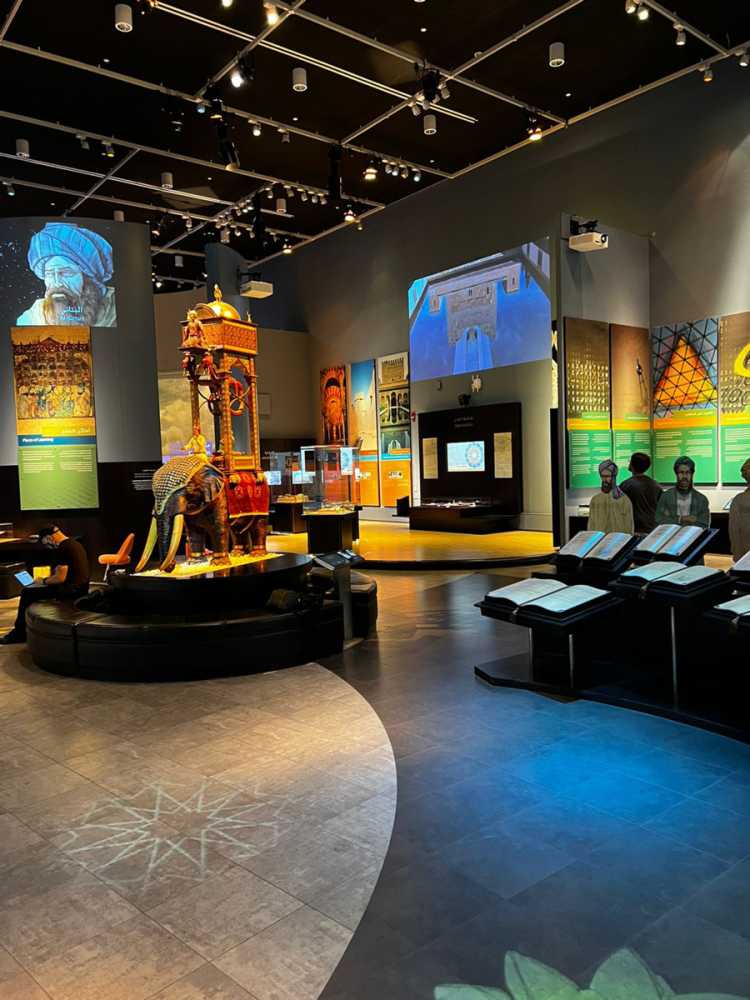SAW adds depth to Saudi science museum
- Details

The Museum of Science & Technology in Islam (MOSTI) was created later, on campus. MOSTI seeks to highlight the plethora of contributions made by Muslim scholars to science and technology during the first Golden Age of Islam (650-1650) and demonstrate how these contributions shaped the world as we know it, laying the groundwork for modern civilisation. Interactive technology leads people through the exhibits, forming an immersive exploration of the various artefacts and relics.
formula D_, an experienced design company that specialises in impactful visitor experiences, secured the tenure for the technological curation of the site, and brought in Stage Audio Works (SAW), who helped specify, supply, and integrate the equipment. RenderHeads Limited created all the custom-made software used in the exhibits.
“We’re grateful that formula D_ brought us in on such a prestigious project,” explains Nathan Ihlenfeldt, SAW’s CTO. “We’ve built up a strong working relationship with them over the course of a few projects as we deliver very complementary services. For MOSTI, they took the lead with the interactive and immersive vision, and we helped to materialise it from a technical perspective.”
The last time the space had been renovated was in 2009, so it was due a deserved upgrade. Much of the equipment in use carried the hallmark of the analogue age it was borne from. With a large budget to play with, the brief was to completely revamp and build on these foundations to create a guided display with an updated, immersive feel - interactivity was the name of the game. This required a complete overhaul of the video and audio systems, as well as the networked elements.
SAW and formula D_ collaborated to devise a premium solution across the board. The video element comprised the lion’s share of the integration, including visual displays of all shapes and sizes. Thirteen Christie laser projectors were implemented throughout the museum. These are driven by Christie’s Pandoras Box media server; a turnkey solution with a versatile render engine that facilitates projection onto any surface.
This is utilised for some of the larger interactive exhibits, including an object theatre zone, where three projectors deliver a multi-screen immersive experience. Another key attraction is a large 10m display closet. “Previously, the interactive element was supported by touch foils situated behind the glass, which were technically limiting and unsightly,” explains Ihlenfeldt. “We replaced this with a laser scanner that picks up multiple touchpoints across the cabinet, which works far better.”
Additionally, almost 40 Iiyama touchscreen panels were installed throughout the space to provide tactile interaction for formula D’s bespoke set designs.
Each kiosk is supported by its own individual Lenovo P330 workstation. Ihlenfeldt describes the set-up: “We’re particularly proud of the design of the server racks. The previous system required 5U per exhibit; we’ve reduced the number of racks in the server room from eleven 40U server racks to merely four, which is a considerable improvement. On top of that, each PC requires 80W, so we calculated that this new and improved system runs on 1/8th – 1/10th of the power consumption of the previous system - a testament to an all-round efficient integration.”
Specialising in bespoke solutions, RenderHeads wrote all the software used for the kiosks with a custom content management system. SAW installed numerous GPI connections to tie in various physical elements for the exhibits, including lighting and headsets for guided tours.
SAW also implemented an audio system to match the video. For the primary directional loudspeakers, several Genelec 4430As were selected, plus a 7360A subwoofer for low-end support. Genelec’s Smart IP technology helps to streamline the installation, with PoE technology drastically reducing the cabling required for a more aesthetic result.
They integrate seamlessly within a Dante AoIP network so that each loudspeaker can be configured remotely and separately if required. A couple of the directional loudspeakers were re-purposed after being upgraded to be Dante compatible. The entire system is managed via a Q-Sys system, with Netgear switches handling the audio and video distribution across the network.
Michael Wolf, founder and CEO at formula D_ comments, “We were super impressed with SAW’s professionalism and collaboration with us on this project. Together we’ve delivered a complete audio-visual overhaul that has helped reimagine the museum’s approach to storytelling using more interactive and impactful methods.”
Ihlenfeldt adds, “Overall, KAUST MOSTI was a very successful installation. Aside from some unavoidable delays caused by COVID restrictions, everything went to plan.”
















